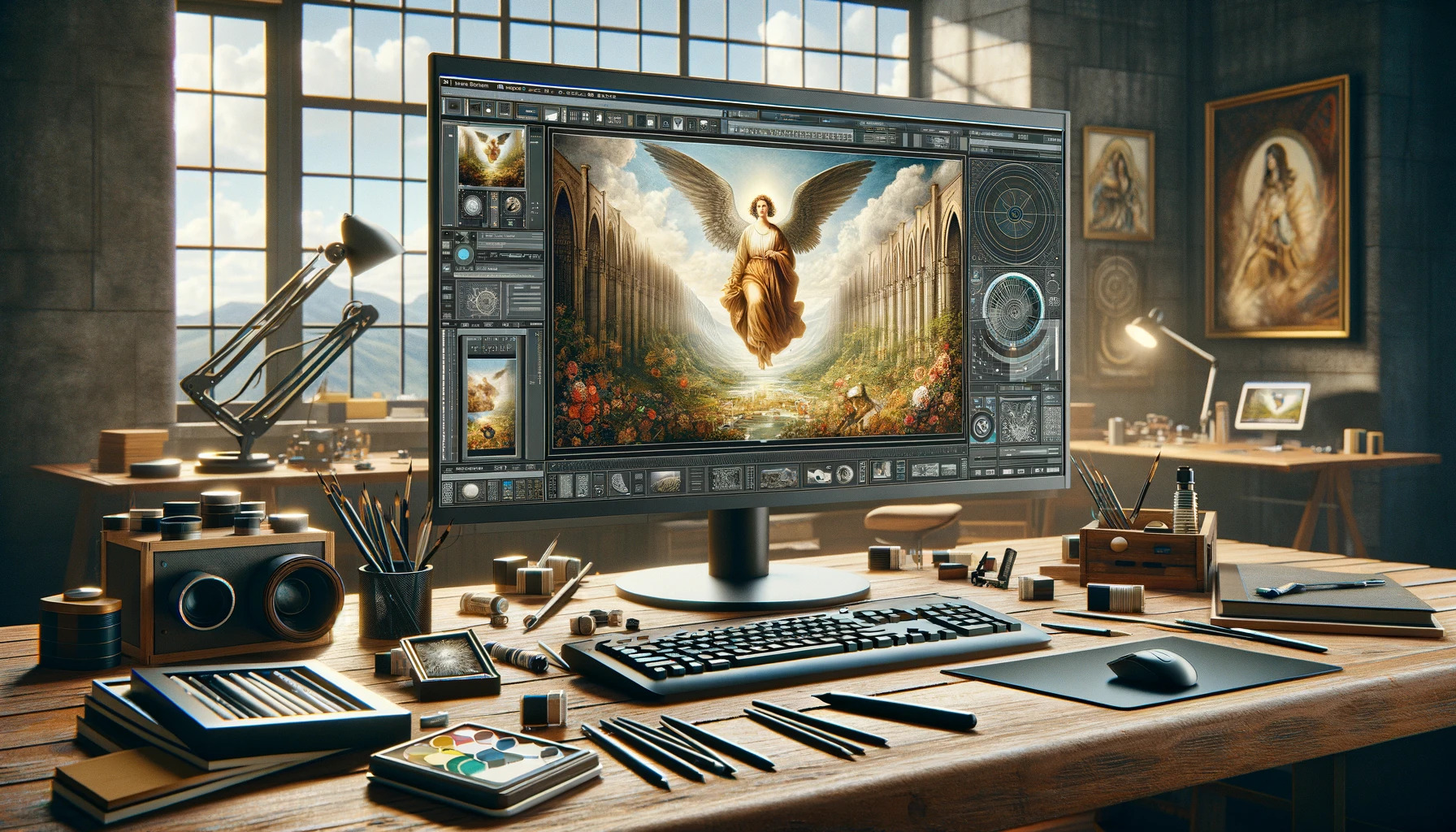Upscaling Techniques for Art Reproductions and Digital Restorations
By Sandy
Published March 7, 2024
 Upscaling Techniques for Art Reproductions and Digital Restorations
Upscaling Techniques for Art Reproductions and Digital Restorations
In the realm of art and digital imagery, the ability to upscale images has transformed the way we interact with, reproduce, and preserve visual media. From enhancing the clarity of cherished historical photos to optimizing artwork for the high-resolution demands of today's digital platforms, upscaling techniques are an essential tool in the digital artist's repertoire. This article delves into the sophisticated world of image upscaling, exploring the methods and technologies that are revolutionizing art reproductions for specific uses, including social media, gaming, and archival restoration.
The Essence of Image Upscaling
At its core, to upscale an image is to increase its resolution or size without losing the quality or integrity of the original piece. This process is crucial for a multitude of applications, from preparing artwork for large-scale prints to enhancing the detail and vibrancy of images intended for digital viewing.
Techniques for Artistic Perfection
1. Neural Networks and AI-Driven Upscaling
Artificial Intelligence (AI) has ushered in a new era of image upscaling. By training on vast datasets of images, AI algorithms can predict and fill in missing details with astonishing accuracy. This technique is particularly effective for upscaling gaming images, where the enhancement of textures and character details contributes significantly to the immersive experience.
2. Fractal-Based Upscaling
Fractal-based methods use mathematical formulas to predict and replicate the self-similar patterns found in nature and art. This approach can restore historical photos with an unparalleled level of detail, breathing new life into images that might otherwise be lost to time.
3. Edge Enhancement Techniques
Edge enhancement focuses on sharpening the borders between different colors and textures to make the details in an image more pronounced. This technique is essential when you want to upscale social media images, ensuring they stand out on crowded platforms.
4. Patch-Based Methods
Patch-based upscaling involves segmenting the image into small patches and then enhancing each individually before reassembling the image. This method is particularly adept at handling complex textures and patterns, making it ideal for upscaling images for specific uses such as fabric prints or detailed illustrations.
The Art of Choosing the Right Method
The choice of upscaling technique depends on several factors, including the intended use of the image, its original quality, and the specific characteristics of the content (e.g., texture, color depth, contrast). A nuanced understanding of these methods allows artists and digital restorers to select the most appropriate technique for each project, ensuring the highest quality outcome.
Practical Applications in the Digital Domain
Upscaling for Digital Archives and Museums
The preservation of art and historical documents is a critical application of upscaling techniques. By enhancing the resolution and clarity of these invaluable resources, digital archives can offer more engaging and informative experiences to viewers, making history accessible to a wider audience.
Enhancing Visual Content for Digital Platforms
In the fast-paced world of digital media, the visual quality of content can significantly impact viewer engagement. Upscaling techniques allow creators to adapt their work for various platforms, ensuring that each piece looks its best, whether viewed on a smartphone screen or a high-definition monitor.
Revolutionizing the Gaming Industry
The gaming industry continually pushes the limits of visual fidelity. Upscaling allows game developers to create rich, detailed worlds that run smoothly on a variety of hardware, from high-end gaming PCs to mobile devices, enhancing the overall gaming experience.
The Future of Art Reproductions
As technology advances, the possibilities for art reproduction and image upscaling continue to expand. Emerging techniques, such as quantum computing and advanced neural network architectures, promise to further enhance our ability to reproduce and interact with art in the digital age.
Conclusion
The mastery of upscaling techniques represents a critical juncture in the preservation and reproduction of art. By leveraging the power of modern digital technology, artists, restorers, and content creators can ensure that the beauty and detail of visual media are not only preserved but enhanced for future generations to appreciate. As we move forward, the continued refinement and development of these techniques will undoubtedly unlock new possibilities for creativity and cultural preservation, making the art of upscaling an essential pillar of the digital arts and sciences.